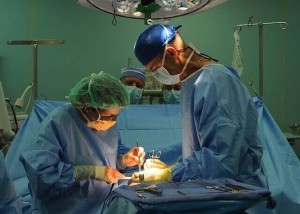4 Basic Things About Circumcision Surgery
 The term circumcision surgery
The term circumcision surgery
is defined as the surgical removal of foreskin, which covers the head of male-genital (penis). It is an ancient practise, which can be traced back in the history. This practise has its origins in many religious and societal rites. And even today, in the modern age of sophisticated technology, many parents have their male-children circumcised for religious or other medical/social reasons.
Circumcision can be a painful subject in more than one way, especially if the patient’ concerns aren’t properly addressed. Because of its primarily religious associations, it can be difficult for a lot of people to talk about circumcision surgery on health terms alone. Circumcision Center, however, deals with the medical side.
While many religious communities around the globe have their male-children circumcised, it won’t be wrong to say that no authentic data is available in this matter. However, organisations campaigning against it estimate that every 1 male out 4 is circumcised. National rates vary widely from about 23% males in the USA to 2% in Sweden. Whatever your personal views might be on this situation, remember that no surgery in the world is without some risks associated with it and circumcision is no exception to this reality. So, knowing all the schematics will go a long way to alleviate any fears in the decision making.
4 Basic Things About Circumcision Surgery – Risks, Benefits, Necessaties, How is done?
1: Why Is Circumcision Necessary?
In a nutshell, the use of circumcision surgery for medical or health reasons is an issue that continues to be debated. In addition to this, foreskin is perfectly healthy and harmless. Like any other human tissue, it should only be removed for a good and justified reason. The biggest reason behind its recommendation is the tight foreskin in new born babies. Moreover, the American Academy of Paediatrics found that the health benefits of new-born male circumcision outweigh the risks but is not beneficial enough to warrant the circumcision on the new-borns. The procedure may be recommended in older boys and men to treat phimosis or an infection of the penis.
2: How is Circumcision done?
Circumcision surgery in men involve the cutting off excess foreskin protecting head of penis. As the only moving part of penis is its fore-skin, which furthers the sexual activity by stimulating the head. If done on the new-borns, the surgery takes about 10-15 minutes and isn’t overtly difficult. However, adult circumcision is more complex and takes about an hour to complete. The normal healing time lasts for 5-7 days.
It is recommended that parents should talk with their doctors about the potential risks and benefits associated with circumcision of a male child. Other factors, such as culture and region will also influence this decision.
3: Are there any benefits of Circumcision?
As it turns out there is some evidence to support that circumcision has health benefits, including:
- A decreased risk of urinary tract infections.
- A reduced risk of some sexually transmitted diseases in men.
- Protection against penile cancer.
- Prevention of balanitis and balanoposthitis.
- Prevention of phimosis and paraphimosis
- A treatment for tight foreskin induced painful intercourse.
4: Are there any risks associated with Circumcision?
As mentioned earlier, risks are associated with almost all of the known and practised surgeries
Problems associated with circumcision include:
- Risk of Bleeding and infection at the site of circumcision surgery
- Pain, during the healing phase
- Irritation of the glans
- Increased risk of meatitis
- Risk of injury to the penis





Leave a Reply